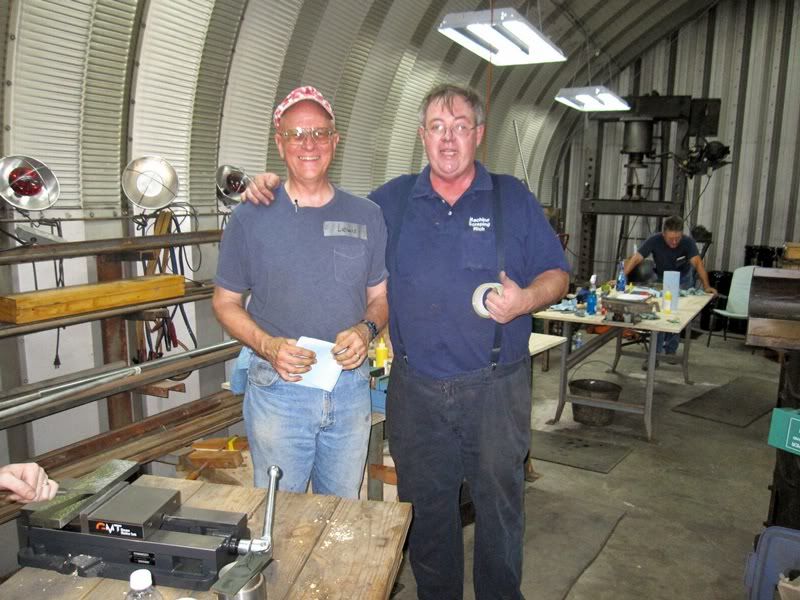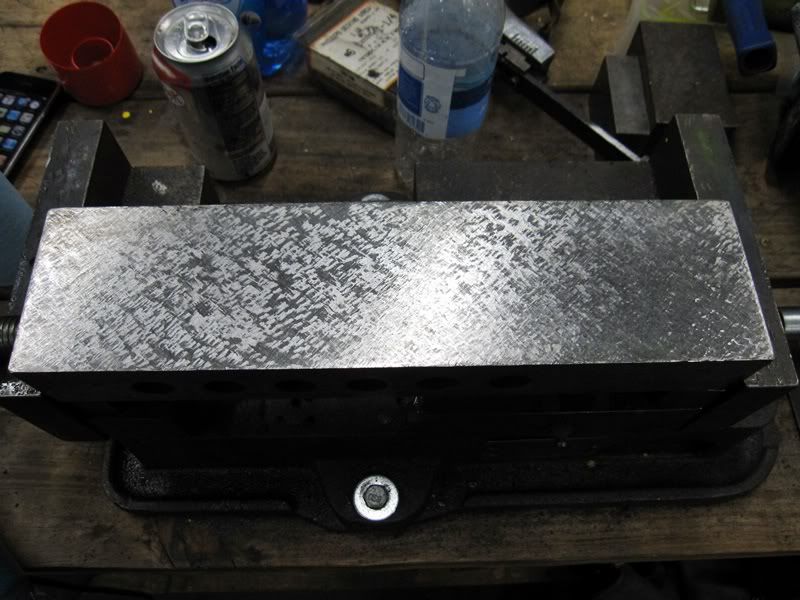lazlo
Diamond
- Joined
- May 23, 2005
- Location
- Austin, TX
We just completed Rich King's 3-day (36 hour!) scraping and machine rebuilding class.
For those of you who aren't familiar with Rich King, his father was a master machinery rebuilder who invented the Kingway Alignment jig. Rich has spent most of his career rebuilding machines and teaching students all over the world -- well over 12,000 students so far, IIRC.
Or, in Forrest's words:
Rich's class is far more than teaching manual and power scraping and flaking. It's effectively 36 hours of drinking from a firehose of 2 generations of machinery rebuilding tips and techniques. As much as I learned and practiced in 3 days, it's going to take me awhile to assimilate a lot of what Rich taught us, and a lot more practice to get really good at it.
Before the class starts, Rich sends you a booklet of scraping techniques, and his DVD. It's really important that you read and watch the materials beforehand -- he assumes you're familiar with the materials, and hits the ground running.
I've read all of Forrest's posts, Connelly, Moore and Mike Morgan's books, and scraped some parts in my shop. But Rich's class was fantastic -- it really pulled together a bunch of concepts that would have taken me years to figure out on my own. Highly recommended!
Here are a bunch of pictures showing the progression of the class, and various topics/projects we did...
The obligatory (and traditional) blanchard ground cast iron block. Roughed in with criss-crosses to plough through the circular crests, and then the first bluing:

Takes several passes just to get a reasonable bearing

Several of the blocks were out by 4 - 6 thou. Rich showed us how to step scrape it, which saves a ton of work.

Early on the first morning. Lewis isn't tired yet

For those of you who aren't familiar with Rich King, his father was a master machinery rebuilder who invented the Kingway Alignment jig. Rich has spent most of his career rebuilding machines and teaching students all over the world -- well over 12,000 students so far, IIRC.
Or, in Forrest's words:
Forrest Addy said:It's run by Rich King, a long established expert in the scraping world. When I worked for the Gummint we contracted with him every few years to teach our guys how to scrape and align etc. It was a good deal for us because it greatly improved productivity.
Rich's class is far more than teaching manual and power scraping and flaking. It's effectively 36 hours of drinking from a firehose of 2 generations of machinery rebuilding tips and techniques. As much as I learned and practiced in 3 days, it's going to take me awhile to assimilate a lot of what Rich taught us, and a lot more practice to get really good at it.
Before the class starts, Rich sends you a booklet of scraping techniques, and his DVD. It's really important that you read and watch the materials beforehand -- he assumes you're familiar with the materials, and hits the ground running.
I've read all of Forrest's posts, Connelly, Moore and Mike Morgan's books, and scraped some parts in my shop. But Rich's class was fantastic -- it really pulled together a bunch of concepts that would have taken me years to figure out on my own. Highly recommended!
Here are a bunch of pictures showing the progression of the class, and various topics/projects we did...
The obligatory (and traditional) blanchard ground cast iron block. Roughed in with criss-crosses to plough through the circular crests, and then the first bluing:

Takes several passes just to get a reasonable bearing

Several of the blocks were out by 4 - 6 thou. Rich showed us how to step scrape it, which saves a ton of work.

Early on the first morning. Lewis isn't tired yet

















 It's a wet spotting because I thought I had gone backwards in PPI.
It's a wet spotting because I thought I had gone backwards in PPI. 













 But even though the 2nd and 3rd days were power scraping, we were all beat by the end of the third day.
But even though the 2nd and 3rd days were power scraping, we were all beat by the end of the third day.

